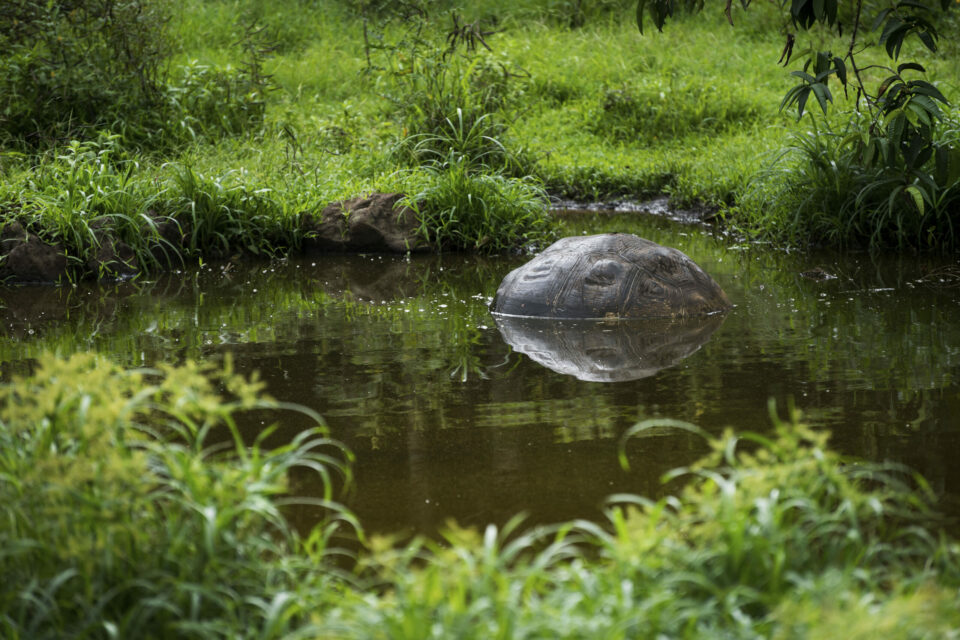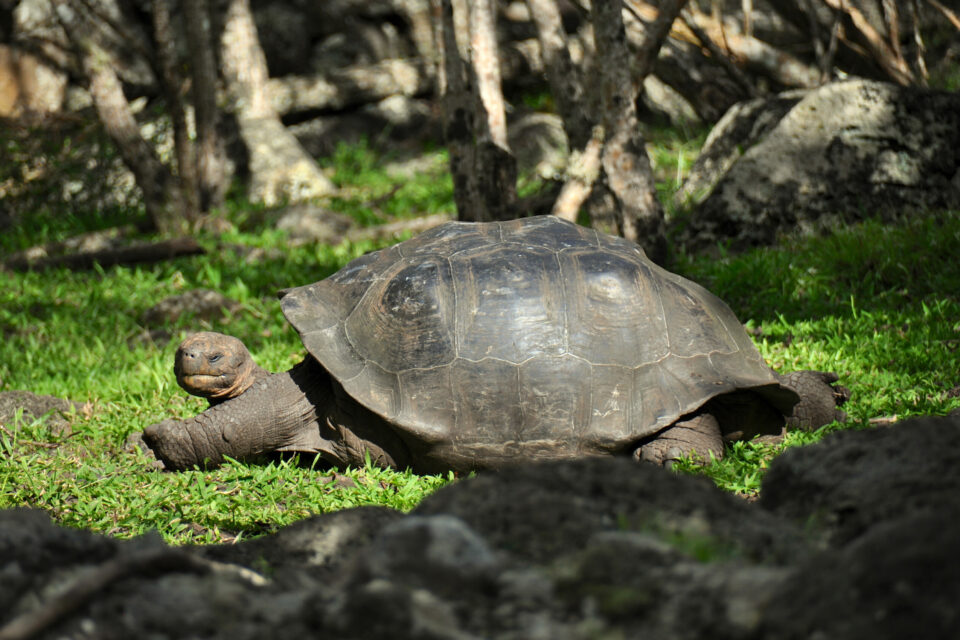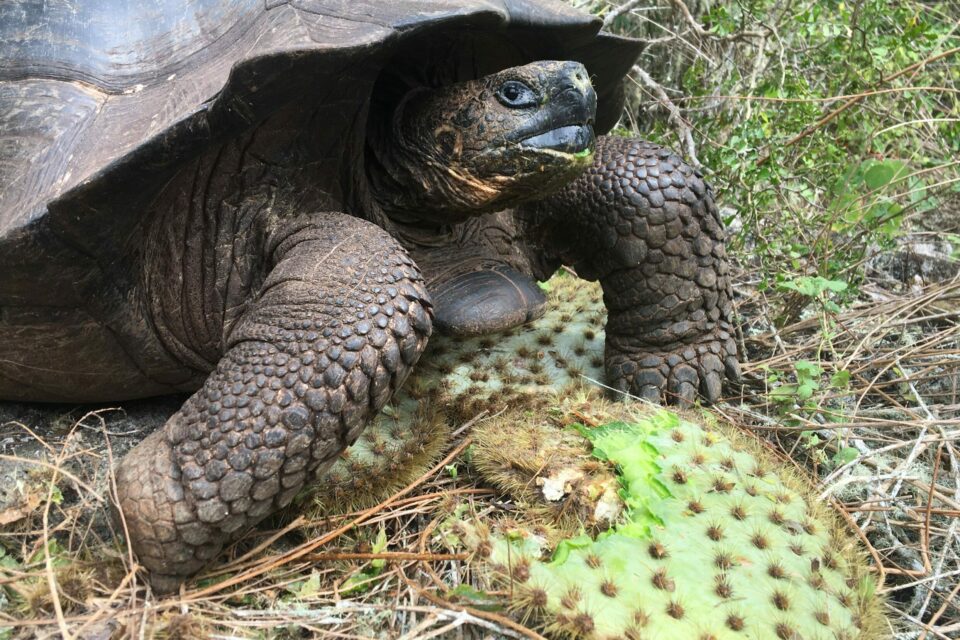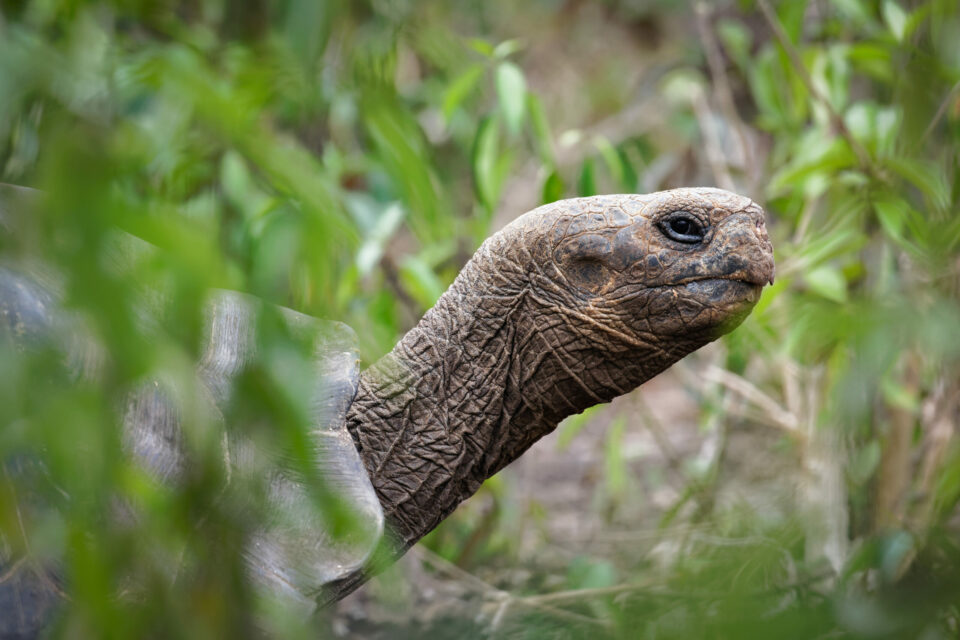

Lonesome George has relatives…
Henry Nicholls, the editor of 'Galapagos Matters', reports on recent findings by researchers at Yale University regarding the most famous Galapagos giant tortoise of all.
Lonesome George might have passed away but he’s still making the news. Less than six months after his death, with his carapace still interred in a Galapagos freezer, it appears he may not have been the last of his kind after all. There is now clear evidence of giant tortoises with Pinta ancestry on another island in the archipelago.
In a forthcoming study, geneticists from Yale University identify 17 hybrid tortoises with various combinations of Pinta genes on the nearby island of Isabela.
The existence of these Pinta-like tortoises came to light by chance when an initial sample of 27 tortoises from Isabela’s northernmost volcano Wolf turned up a youthful male with some unusual genes. This animal – officially dubbed PBR03 – appeared to be a first generation hybrid between a full-blown Pinta male and an Isabela female. “Lonesome George is not alone among Galapagos tortoises”, the geneticists reported in Current Biology back in 2007.
Since then, they have worked hard to expand on this initial finding. Within a couple of years, they were able to return to Isabela, the Galapagos National Park mounting a huge expedition to extract blood from as many of Wolf Volcano’s tortoises as possible. The geneticists came away with samples from more than 1660 tortoises.
Earlier this year, the Yale team demonstrated that some of these tortoises had signs of Floreana ancestry, another species thought to have disappeared in the mid-19th century. In Table S1, buried in the supplemental information for the paper, they reported a cluster of seven tortoises with a strong affinity to the Pinta species.
The forthcoming paper, due to be published in Biological Conservation, extends this number to 17 individuals. Four of these look like they are first generation hybrids (F1), with one or other of their parents being of full Pinta stock. The rest seem to be second-generation (F2) hybrids. Several of the Pinta-like tortoises appear to be siblings, which seems reasonable for a species that lays clutches of up to 20 eggs at a time.
Given that the sampling may only have captured around 1/5th of the tortoises roaming on Wolf Voclano’s inhospitable flanks, the geneticists extrapolate to estimate there could be some 60 to 70 Chelonoidis abingdoni hybrids yet to be discovered. As five of the 17 tortoises are juveniles less than 20-years-old, it is also possible that there is still a purebred Pinta tortoise out there and breeding. If there is, however, the geneticists have not yet stumbled upon it.
Read the full article on Henry’s blog The Way of the Panda…
Related articles


The return of the Floreana giant tortoise

Galapagos giant tortoises: An update from the field



